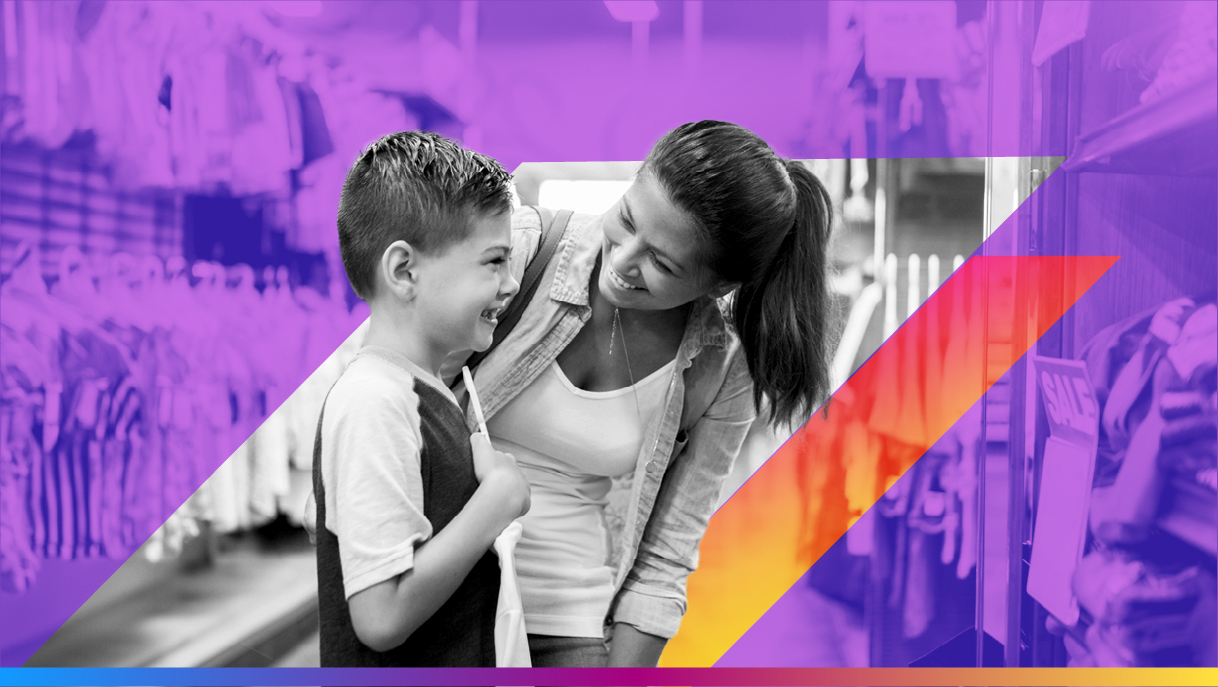
Back-to-School 2024: Zeta Data Uncovers Shopping Plans
By Melissa Tatoris, VP Retail Solutions. Back-to-School is right around the corner as the season is now extended. And parents are prepared to spend some serious cash.
We recently ran a survey of 1,477 back-to-school shoppers in the U.S. to learn where they plan to shop, how much they’ll spend, and what’s changed since last year.
In this article, we’ll dive into some of the key takeaways.
Bonus: See the infographic for a quick peek at top back-to-school 2024 stats.
The Back-to-School Season Starts Now
Every school district paces its start dates with different timing; some universities go back to school in early August and some primary and secondary schools in the U.S. start in September. In the south, school begins in early August.
Regardless of the start time, the back-to-school shopping season starts now, in June. In 2023, June was actually the top month that consumers planned to shop at 30%. But this year, it’s August. 41% of consumers plan to tackle back-to-school shopping in August, September and July both claimed another 22% of shoppers, and only 14% plan to shop in June.
This was consistent regardless of where the shopping will occur. Whether it’s visiting a store, shopping online, or opting for curbside pickup, August is the top shopping month. However, some discrepancy exists around the age of the student. Parents of preschoolers are more likely to start their shopping in June.
Since 63% of shoppers won’t start their shopping until August, you still have time to plan your back-to-school campaigns.
Back-to-School 2024 Budgets are Sizable
In 2022, nearly half of back-to-school shoppers planned to spend between $100 and $300. Last year, in 2023, it was still a significant 43%, where 13% planned for $800-$1000 and another 30% at $1000+.
But for the 2024-2025 school year, 55% of budgets are over $800. Specifically, 21% (up from 13%) are in the $800-$1000 range and 34% (up from 30%) are at more than $1000. The $100-$300 spenders decreased from 43% to 31% for 2024.
This accounts for a substantial increase in the budget for back-to-school shopping. This increase is true for all shoppers, regardless of age, income level, or ethnicity.
And this makes sense when we look at where they’re shopping, and what they plan to buy.
- Low budget shoppers are prioritizing school supplies (and maybe a bit of clothing), which are typically lower-ticket items.
- Over 1/3 of low budget shoppers will go to big box stores.
- Shoppers prioritizing electronics tend to spend (and will need) $800 or more. These shoppers prefer online retailers.
- Those in the $400-$800 budget range plan to spend across categories: school supplies, clothing and accessories, and electronics. They also split their shopping between big box stores, department stores, and online retailers.
If we look specifically at the low-budget cohort, 36% plan to shop at big box stores, and another 24% at online retailers. 31% will buy school supplies and 24% plan to buy clothing.
On the other hand, of those planning to spend more than $1000, 24% said they’ll shop at “Other” store types and 23% will buy from online retailers. Both school supplies and electronics appeal to 18% of shoppers, but respondents with high budgets will spend across all categories.
Shoppers Prefer Big Box Stores and Online Retailers
Most shoppers are planning to shop in-store again this back-to-school season. But their exact path is varied: 24% plan to hit big box stores, 18% will visit department stores, 17% will shop at local retailers, and another 18% stated they’d go to “Other” or “None of the above.” Another 23% said they’d shop at online retailers.
This “Other” or “None of the above” piece of the pie is notable and increased 6% YOY. This tells us that consumers are seeking out new or unique ways to shop, or other types of retailers, such as off-price stores like Dollar General or Big Lots. Big box stores also decreased 5% YOY.
While last year the majority preferred big box stores, this year respondents favor both big box stores and online shopping. This aligns with the conversation around budgets; as budgets increase, shoppers opt for different types of stores.
The spread of store types also aligns with what back-to-school shoppers are buying. Most respondents plan to purchase school supplies, followed by Clothing & Accessories and Electronics. While these traditional school items are expected, we also see significant spend in “Safety Essentials,” “Extracurricular Activities,” and “Online Resources & Subscriptions.”
Key Audience Insights
So who are these back-to-school shoppers? Based on our survey, the target audience for back-to-school shopping is predominantly:
- Female
- Aged 35-55
- $75,000-$199,000 household income
- Shopping for middle or high schoolers
Generally, these shoppers are parents (or sometimes grandparents and other guardians). While the respondents skewed female, they covered a wide age and income range.
Tips For Running Winning Back-To-School Campaigns in 2024
The keys to success this back-to-school season are the same as most holidays: timing and promotions. By leveraging the insights from our study, you’re well on your way to better understanding this year’s back-to-school shoppers, their preferences, and their budgets.
Here are a few more tips for winning your back-to-school campaigns this year.
- Marketing for back-to-school products should start as soon as early July. But don’t end them too early; many shoppers won’t be looking to buy their supplies, clothing, or electronics until September. Keep your BTS marketing in an evergreen execution to grab as much response as possible.
- All retailers — but Big Box Stores in particular — should prioritize school supplies and electronics in their advertising messaging. Showcase popular items like backpacks, dorm room essentials, tech gadgets, and key sellers in the stationery aisles.
- Back-to-school shoppers come from every generation, gender representation, income level, and ethnicity. While it’s true that our survey was predominantly female, retailers should avoid targeting them exclusively or leaning into “mom” language in your creative. Consider using Gen AI capabilities to tap into generational language and streamline this process.
- Shoppers this year plan to spend between $100-$300 on back to school, or over $1000. Focus your advertising strategy across all product categories (clothing, shoes, electronics, etc.) and consider incentives or coupons to drive up average order value.
- Protect your margin by understanding which of your consumers require an offer and which do not. Those that will have a proclivity to buy at full price by not giving them an offer will help build your bottom-line profit, generating more budget to spend on future marketing initiatives.
- Future-proof your holiday by placing programmatic ads targeting households with school aged children to acquire and build top of the funnel during BTS timeframe to expand your retained customer base for the holiday season. There will be many consumers shopping for school supplies from June- August that you can acquire for holiday engagement.
To learn more about specific ways to target back-to-school shoppers this academic year, check out part 2 of the back-to-school series.
Want to see Zeta in action?




